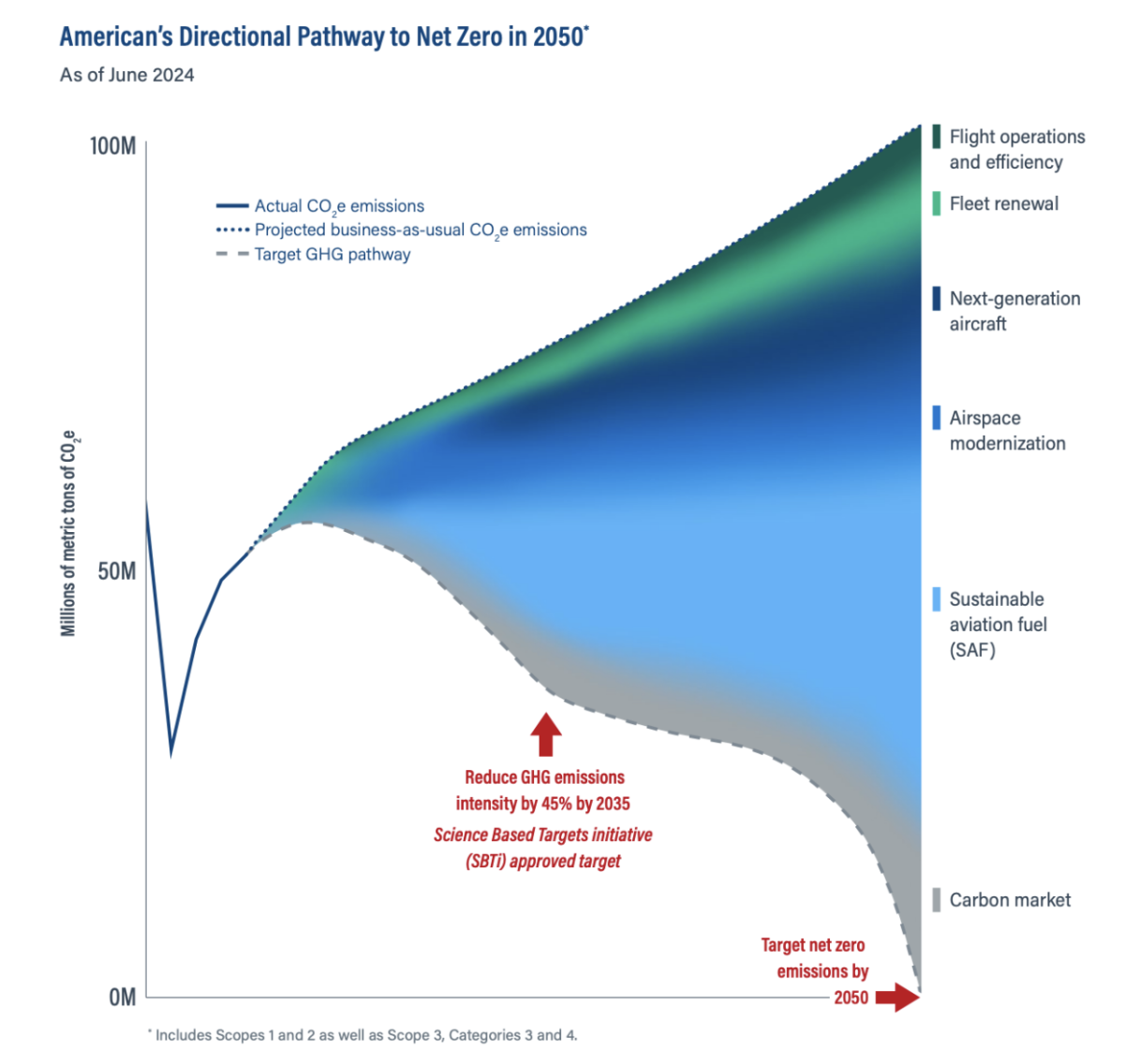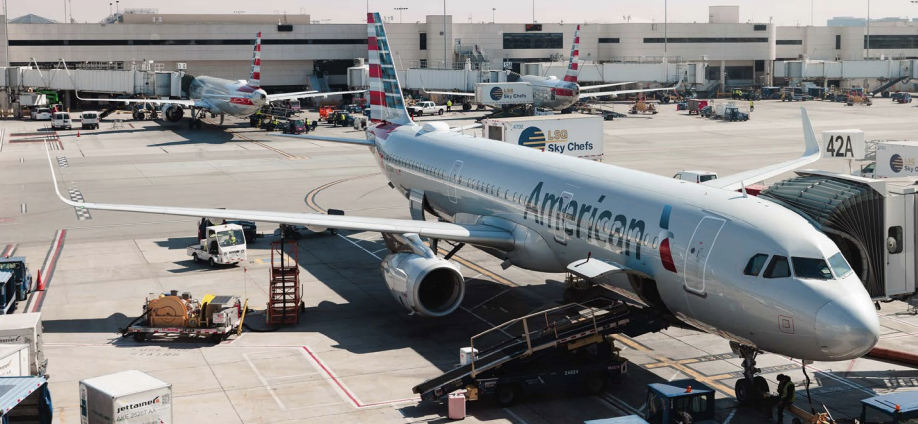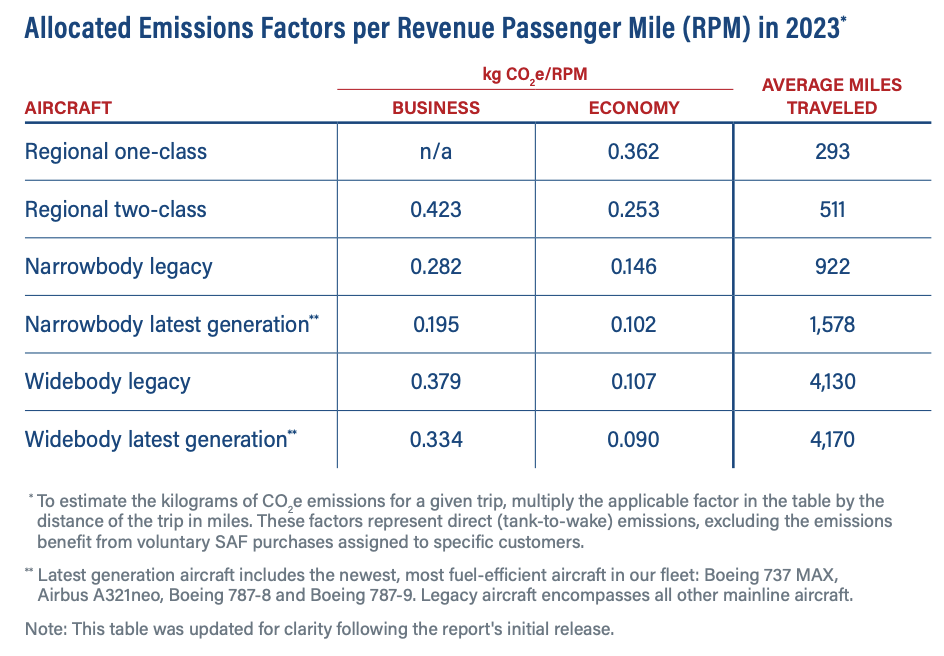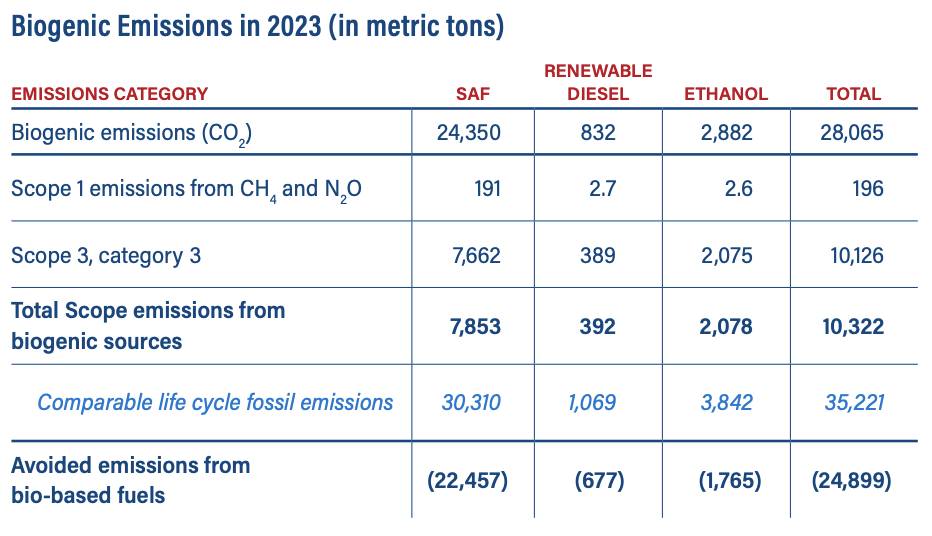American Airlines’ Commitment to a Low-Carbon Future: Ambitious Climate Goals and Collaborative Efforts
Originally published in American Airlines' 2023 Sustainability Report
At American, we believe that being a competitive, resilient airline — and one that will continue to care for people on life’s journey for generations to come — requires helping to drive the operational, policy and technological changes needed to advance the transition to a low-carbon aviation future.
American has set what we believe are ambitious climate goals, and in 2022 we became the first airline globally to set externally validated, science-based 2035 greenhouse gas (GHG) reduction targets. Our strategy to reach these targets focuses on running an ever more fuel-efficient operation, primarily by operating more fuel-efficient aircraft that are increasingly powered by low-carbon fuel.
While we are committed to taking steps within our own operations, the reality is that we cannot rely on today’s technologies to achieve the progress we need to make in reducing our emissions in the future. Making the transition to low- and no-carbon aviation depends on a range of technologies that are not yet at commercial scale — or haven’t yet been invented. That’s why a key part of our climate strategy is collaborating with business partners, startups, scientists and innovators who are pioneering these technologies. Those collaborations, in turn, are driving our investments and catalytic commitments to help advance and scale aviation’s decarbonization solutions.
Our Climate Strategy
Our aim is to achieve net zero GHG emissions by 2050. To drive progress, we have set an intermediate target to reduce GHG emissions intensity by 45% by 2035, relative to a 2019 baseline. This includes both direct emissions (Scope 1) — primarily from the combustion of jet fuel used in flight — and the indirect emissions (Scope 3) from the production of the jet fuel we use and the consumption of jet fuel used by our contracted regional carriers.
Our strategy is focused on driving progress across several key levers — some of which we have the ability to influence directly, and some of which will require action, collaboration and innovation within our industry, across sectors and by policymakers.
Underpinning our strategy is our analysis of the climate-related risks and opportunities facing our company. We initially conducted the analysis in 2020, and, in early 2023, we further expanded and deepened it by incorporating 1.5°C-aligned scenarios, consistent with the ambition of the Paris Agreement, in our assessment of both physical and transition risks. This includes the International Energy Agency Net Zero Emissions by 2050 Scenario, which we selected because it includes aviation-specific narratives and milestones. For a detailed discussion of our process and findings, see page 61.
Acknowledging Uncertainty on the Path to Net Zero
Since 2020, we have included a graphical representation of our directional pathway to net zero in our annual sustainability report. It is based on American’s current estimates about the role of key levers in reducing our GHG emissions between now and 2050.
The pathway includes assumptions about a range of important factors, most of which are outside of American’s control. While we expect that certain technologies — such as SAF and new aircraft propulsion — may be able to reduce emissions to a greater extent than others, the future development and availability of these technologies is not something we can predict with precision. Their contribution to our decarbonization will depend on the pace at which new technologies are developed and the willingness of stakeholders to invest in them, as well as the implementation of public policies that will help drive the trajectory toward their adoption.
As a result, there is inherent uncertainty about the emissions reduction contribution of each lever. American’s end goal remains unchanged — achieving net zero in 2050 — but in the interest of transparency, we are acknowledging that it is not possible to accurately predict the path through 2050 with specificity.
Our Goals and Progress
Our strategy is focused on driving progress across several key levers. Below are the components of our strategy, goals and progress through 2023.
Overarching strategy
Working across all levers to transition to operating a resilient, competitive and low-carbon airline
| GOALS |
|
| 2023 HIGHLIGHTS |
|
| STRATEGY LEVER | Flight operations and efficiency Operating our fleet and associated operations as efficiently as possible to reduce fuel use and emissions |
| GOALS |
|
| 2023 HIGHLIGHTS |
|
| STRATEGY LEVER | Fleet renewal Operating more fuel-efficient aircraft and engines |
| GOALS |
|
| 2023 HIGHLIGHTS |
|
| STRATEGY LEVER | Next-generation aircraft Investing to advance the development of low- and no-carbon aircraft that can be integrated into our fleet |
| GOALS |
|
| 2023 HIGHLIGHTS |
|
* See SBTi Aviation Tool carbon intensity on page 74.
| STRATEGY LEVER | Sustainable aviation fuel Purchasing and helping scale SAF production |
| GOALS |
|
| 2023 HIGHLIGHTS |
|
| STRATEGY LEVER | Airspace efficiency and modernization Supporting airspace system improvements that increase efficiency |
| GOALS |
|
| 2023 HIGHLIGHTS |
|
| STRATEGY LEVER | Jet fuel production (upstream) Engaging with our jet fuel suppliers to encourage them to reduce emissions within their operations |
| GOALS |
|
| 2023 HIGHLIGHTS |
|
| STRATEGY LEVER | Carbon market Participating in the voluntary carbon market to neutralize aviation’s residual emissions |
| GOALS |
|
| 2023 HIGHLIGHTS |
|
Aligning Our Capital Investments With Our Net Zero Pathway
A significant portion of American’s capital spending — from the billions of dollars we have invested in our fleet to our ongoing fuel-saving initiatives — brings the added benefit of supporting our GHG reduction targets. See page 12 of our 2022 Sustainability Report to learn more.
Approximately 70% of our total capital expenditures in 2023 were allocated to efforts that also provided decarbonization benefits.








